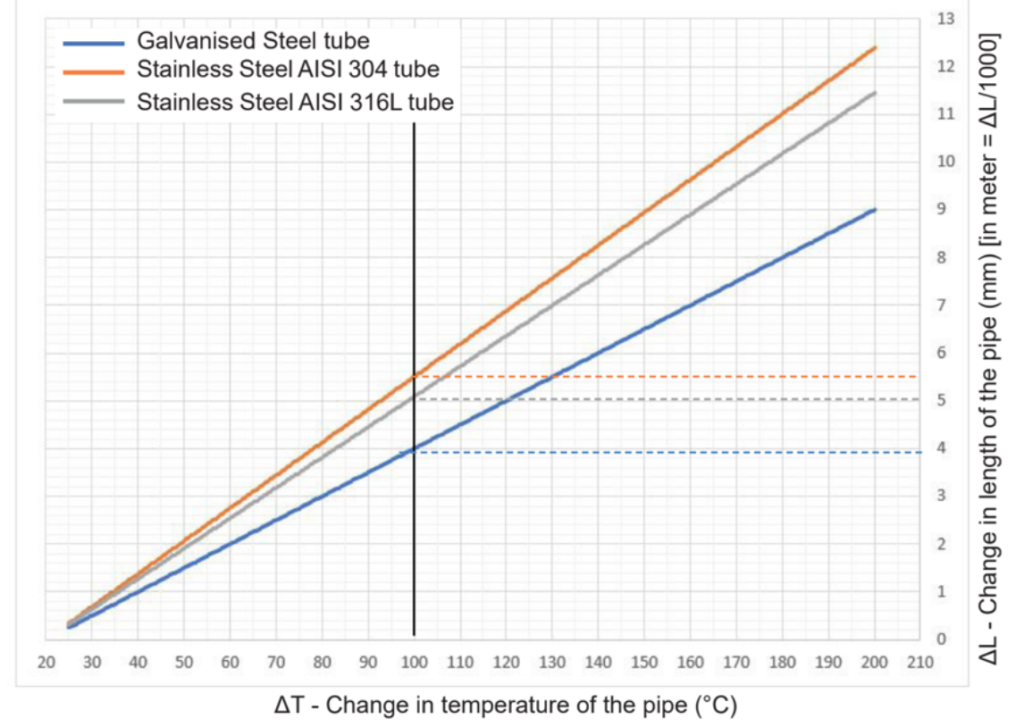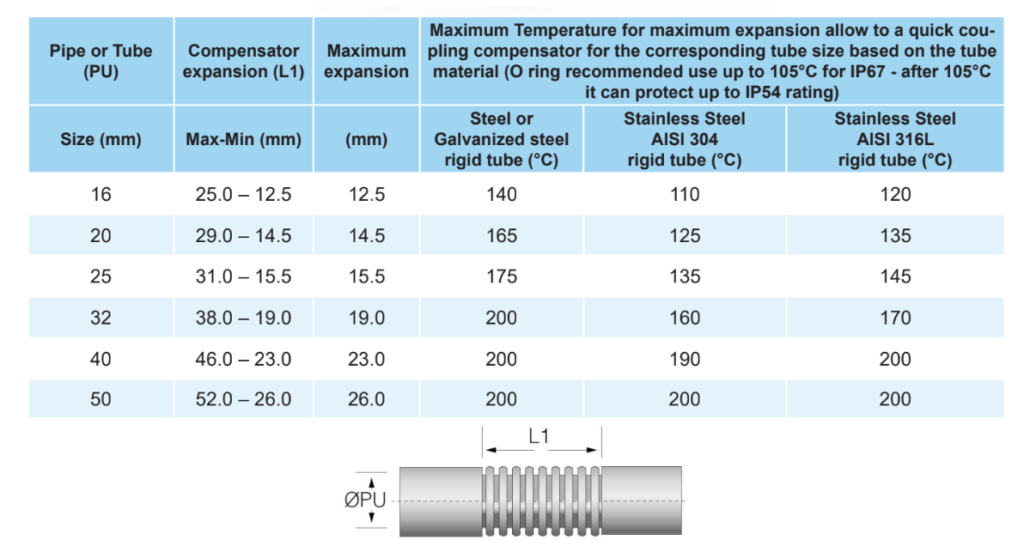What is a dilatation compensator and when is it used?
13 Feb , 2023
A dilatation compensator is a device used to compensate for the change in pipe length due to fluctuations in temperature and environmental conditions. Euro2000 has quick-connect fittings for the connection between two rigid pipes (e.g., galvanized steel or AISI 304 or 316L stainless steel, and more) that operate as dilatation compensators when there are large temperature fluctuations.
The linear thermal dilatation value is not significant for this type of installation. In any case, if it is an installation of significant length, the issue could cause the bending of the pipes at their fastening points.
Linear expansion of pipes in different materials
A linear pipe expansion occurs when there is a change in shape or volume due to external temperature fluctuations. Atoms push each other, and the distance from each other increases. This effect is called the linear expansion of the pipe.
ΔL = α x L x ΔT
ΔL = change in pipe length (mm) [in meters = ΔL / 1000]
α = Values of the coefficient of linear thermal expansion (°C) ^ -1
L = Length of the pipe (in meters)
ΔT = Temperature change of the pipe (°C)
Below you will find the calculation of the length variation based on the external temperature fluctuation on a 4-meter rigid pipe for different types of materials used in piping systems.

The graph above represents pipes made of different materials with a thermal expansion of 200°C. Euro2000’s quick-connect fittings can be used up to 105°C for all types of materials and feature an IP66/67 protection rating. The Table below illustrates the temperature fluctuations with corresponding length variations.

When there is a high-temperature fluctuation, a dilatation compensator is needed for the pipe.
For example, if one end of the pipe is fixed and the other end needs a device that can allow thermal expansion or contraction, the best solution is to use a thermal dilatation compensator without O-ring, IP 54. The calculation is reported in the table below, and it is estimated on a 4-meter rigid pipe with both ends fixed, assembled with quick-connect compensators, as shown in the figure below.


Download the document for more information on dilatation compensators and their use. For more information, do not hesitate to contact us: our experts are at your complete disposal.

